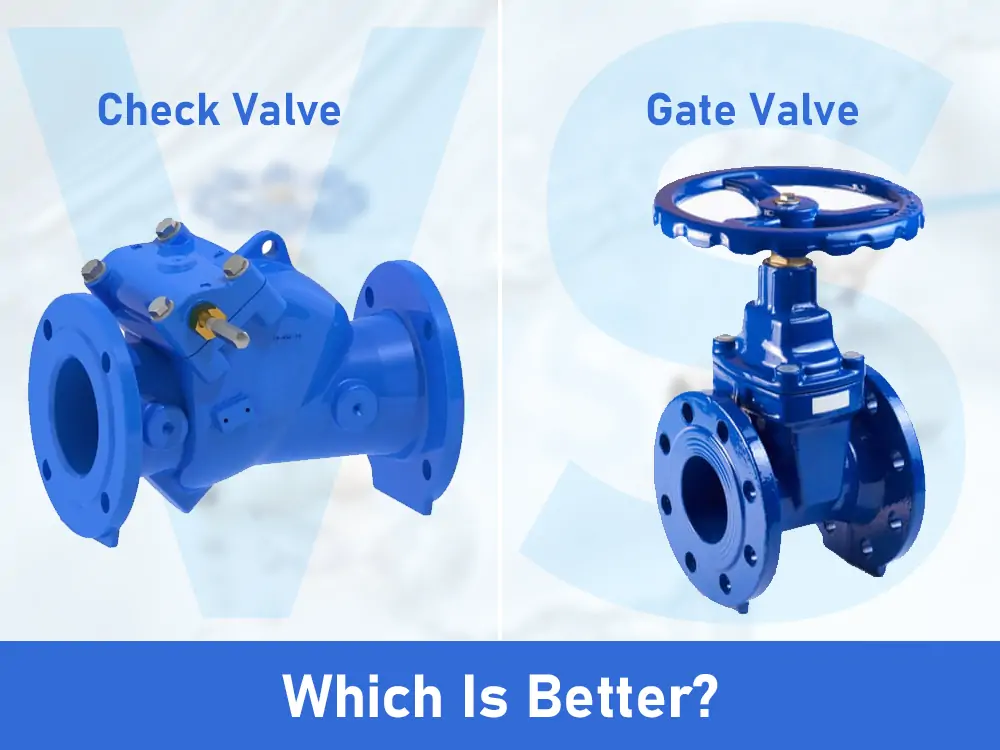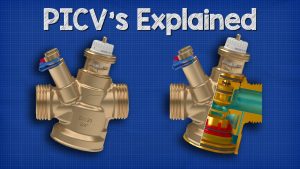Vanalar, çeşitli endüstrilerdeki akışkan boru sistemlerinde çok önemli bileşenlerdir. Verimli ve güvenli operasyonlar sağlamak için akışı kontrol ederler.
Birçok vana tipi mevcut olsa da, en yaygın seçeneklerden ikisi sürgülü vanalar ve çekvalflerdir. Her ikisi de farklı amaçlara hizmet eder ve uygulamaya bağlı olarak benzersiz avantajlar sunar.
Bu nedenle, aşağıdakiler arasında seçim yaparken sürgülü vana Ve çek valfDoğru uyumu nasıl belirlersiniz?
Bu kapsamlı kılavuzda, ihtiyaçlarınıza en uygun vanayı seçmenize yardımcı olmak için sürgülü vanalar ile çek vanaları karşılaştıracağız.

Sürgülü Vanalara Genel Bakış
Sürgülü vanalar, endüstriyel boru sistemlerindeki popüler akış kontrol cihazlarıdır. Kapı benzeri bir kama diskini kaldırarak veya indirerek akışı modüle eden doğrusal hareket valfi ailesine aittirler.
Sürgülü vanalar tamamen açık olduklarında sınırsız, türbülanssız akış sağlarlar. Kapandıklarında ise sıkı bir sızdırmazlık sağlarlar. Bu sayede yüksek veya düşük basınçlı, aşındırıcı ve zorlu uygulamalarda kullanılabilirler.
Sürgülü Vanaların Faydaları
- Kapalıyken sıkı kapatma, yüksek basınçlı uygulamalarda kullanıma olanak sağlar
- Tam delikli tasarım, engelleyici olmayan sıvı akışına izin vererek basınç düşüşünü en aza indirir
- Basit ve sağlam yapı, üretim ve bakımı kolaylaştırır
- Farklı sistem talepleri için çeşitli konfigürasyonlar ve malzemeler mevcuttur
Sürgülü Vanaların Dezavantajları
- Doğrusal olmayan akış karakteristiği nedeniyle kısma akış kontrolü için uygun değildir
- Diğer vana tiplerine kıyasla nispeten daha yavaş tepki süresi
- Özellikle yükselen gövde konfigürasyonları için geniş alan gereksinimleri
Çek Valflere Genel Bakış
Geri dönüşsüz veya tek yönlü valfler olarak da adlandırılan çek valfler, geri akışı önlemek için sıvı akışına yalnızca bir yönde izin verir. İleri akışla birlikte açılan ve ters akışı durdurmak için sıkıca kapanan yaylı bir disk, kanat, bilye veya piston kullanırlar.
Bu otomatik vanalar ekipmanı korur, proses verimliliğini sürdürür ve geri akışa açık sistemlerde kirlenmeyi önler.
Çekvalflerin Faydaları
- Kompakt tasarım dar alanlarda kuruluma olanak sağlar
- Otomatik çalışma, kontrol mekanizmalarına olan ihtiyacı ortadan kaldırır
- Akış değişikliklerine hızlı tepki, anında geri akış koruması sağlar
- Basit yapı, denetim ve bakımı kolaylaştırır
- Farklı akış koşullarına ve boru boyutlarına uyacak çeşitlilik mevcuttur
Çekvalflerin Dezavantajları
- Sınırlı kısma kabiliyeti daha az akış kontrol esnekliği sunar
- Belirli uygulamalarda su darbesi potansiyeli
- Disk kirlenmesi veya arızası servis ömrünü sınırlayabilir
Sürgülü ve Çekvalfler Arasındaki Temel Farklar
Sürgülü ve çek valfler farklı özelliklere ve uygulamalara sahip olmakla birlikte, bazı temel farklılıkları da vardır:
Akış Kontrol Yeteneği
- Sürgülü vanalar hassas akış düzenlemesi sunar. Çek valfler sadece tek yönlü akışa izin verir.
Tipik Uygulamalar
- Tam kapatma kritik olduğunda sürgülü vanalar mükemmeldir. Çek valfler, geri akışı önlemenin çok önemli olduğu yerlerde parlar.
Yanıt Süresi
- Çek valfler ters akışa anında tepki verir. Sürgülü vanalar kademeli olarak kapanır ve sızdırmazlığı daha uzun sürer.
Bakım Gereklilikleri
- Çek valfler tekrarlayan döngülerde aşınmaya daha az eğilimlidir. Sürgülü vanalar daha sık inceleme ve yağlama gerektirir.
Sürgülü ve Çekvalfler Arasında Seçim Yapma
Peki hangisi daha iyi - sürgülü vana mı yoksa çek vana mı? Doğru seçim, özel operasyonel gereksinimlerinize bağlıdır.
Su Arıtma Tesisleri İçin
Su tesislerinde çek valfler, kirli geri akışı önlemek ve suyun saflığını sağlamak için hayati önem taşır. Hızlı tepkileri sayesinde ters akışı anında keserler.
Sürgülü vanalar hassas düzenleme sağlar ancak anında kapatma sağlayamaz. Bu nedenle izolasyon veya bakım için ikincil bir rol oynarlar.
Petrol ve Gaz Boru Hatları için
Çek valfler, boru hatlarında tek yönlü iletimi sağlamak ve tehlikeli geri akışı önlemek için çok önemlidir.
Sürgülü vanalar bakım için bölümleri izole eder, acil durum kapatmaları sağlar veya depolama tankları arasında parti transferini yönetir.
HVAC Sistemleri İçin
Isıtma/soğutma sistemlerinde çek valfler, akışın tersine dönmesini önleyerek sirkülasyonu korur. Bu da tutarlı bir sıcaklık düzenlemesi sağlar.
Sürgülü vanalar geri akışı hızla durduramazken, hassas akış kontrolleri sistem parametrelerinde ince ayar yapılmasına olanak tanır.
Diğer Valf Seçimi Hususları
Temel işlevselliğin ötesinde, vana seçerken birkaç faktör daha önemlidir:
- Çalışma Koşulları: Sıcaklık, basınç parametreleri, akış hızı, akışkan özellikleri
- Çevre: Potansiyel korozyon, kirlenme, titreşim koşulları
- Yönetmelikler ve Standartlar: Uygulama başına uyumluluk gereklilikleri
- Güvenilirlik: Çalışma sıklığı, ömür boyu görev döngüleri
- Kontrol İhtiyaçları: Açma/kapama vs kısma, otomasyon uyumluluğu
- Bütçe: Satın alma, işletme ve bakım maliyetleri
Bu kriterlerin uygulama taleplerine göre doğru şekilde tartılması, optimum vana seçimini sağlar.
Çözüm
Sürgülü ve çek valfler akış kontrol sistemlerinde farklı amaçlara hizmet eder.
Çek valfler hızlı kapatma özellikleriyle geri akışı önler. Hassas ayarlama ve tam izolasyon gerektiğinde sürgülü vanalar parlar.
Temel yetenekleri farklı olsa da, bazı uygulamalar her iki vana tipinin birlikte çalışmasından yararlanır.
Sonuçta, vana işlevselliğini operasyonel ihtiyaçlarla eşleştirmek, bir sürgülü veya çek vana arasında seçim yapmanın anahtarıdır. Kullanım ömrü gereksinimleri, kontrol esnekliği, yönetmelikler ve bütçeler göz önünde bulundurularak en uygun seçim yapılır.












